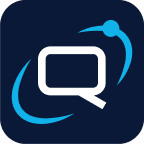Prerequisites
Before you dive into using Quant Cloud, a basic understanding of the following concepts will be highly beneficial, though not strictly mandatory for all tasks:
-
Docker Concepts: Quant Cloud is built around containerization technology.
- Images: Understanding what a Docker image is (a lightweight, standalone, executable package that includes everything needed to run a piece of software, including the code, runtime, system tools, system libraries, and settings).
- Containers: Knowing that a container is a runtime instance of a Docker image.
- Dockerfile: Familiarity with
Dockerfilesyntax can be helpful if you plan to build your own custom images, although Quant Cloud can also work with pre-built images from public or other private registries.
-
docker-composeConcepts: Quant Cloud uses a system conceptually similar todocker-composefor defining multi-container applications (referred to as the “Compose Definition” in the portal).- Services: Understanding how services are defined in a
docker-compose.ymlfile. - Ports: How exposing ports works (e.g. to connect to a web application on port
8080). - Environment Variables: How environment variables are used for configuration.
- Volumes: Basic knowledge of how volumes are used for persistent data.
If you have an existing
docker-compose.ymlfile for your application, you’ll find the transition to Quant Cloud quite smooth, as you can often import it directly.
- Services: Understanding how services are defined in a
-
General Web Application Architecture (Helpful but not Required):
- A basic understanding of client-server models, HTTP requests, and how web applications are typically structured can provide useful context.
Quant Cloud aims to abstract away many of the complexities. However, having this foundational knowledge will help you better understand the configuration options available in the portal and troubleshoot any potential issues more effectively.
